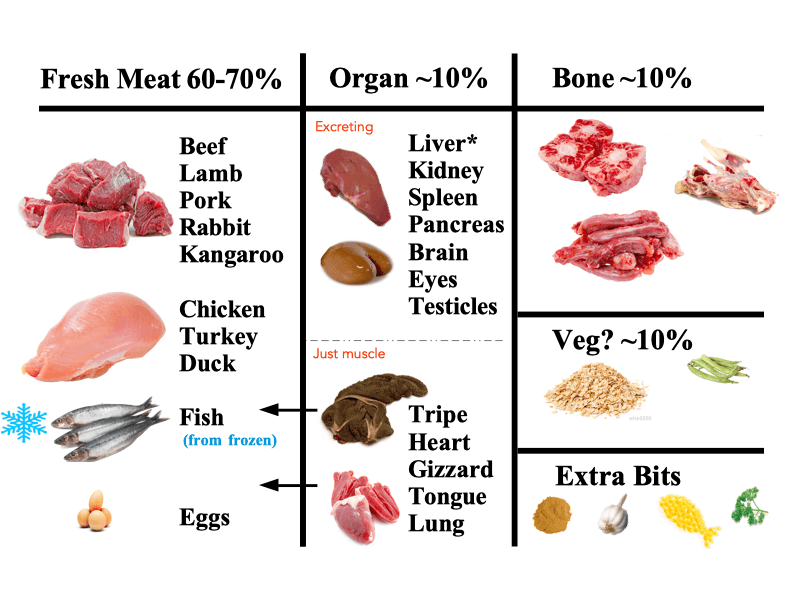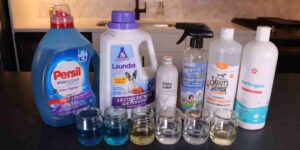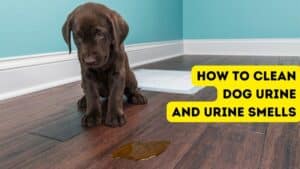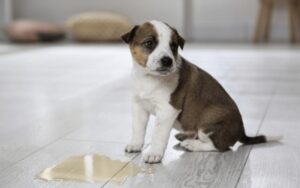A DIY raw dog food diet consists of feeding your dog raw meat, bones, fruits, and vegetables. This approach aims to mimic a dog's natural eating habits for better health.
Crafting a DIY raw dog food diet can provide numerous benefits for your furry friend. Many pet owners believe that this approach leads to improved digestion, healthier skin, and shinier coats. By using fresh ingredients, you control what goes into your dog's meals, ensuring they receive high-quality nutrition.
This diet often includes muscle meat, organ meat, and bones, which are rich in essential nutrients. Preparing meals at home also allows for customization based on your dog's specific needs, preferences, and dietary restrictions. Always consult a veterinarian before making significant changes to your dog's diet to ensure it meets their nutritional requirements.

Customize Homemade Diet Dog Food
Table of Contents
ToggleIntroduction To Diy Raw Dog Food Diet
The DIY Raw Dog Food Diet is becoming increasingly popular among pet owners. Many believe that a raw diet can lead to better health for their dogs. This approach focuses on natural ingredients, mimicking what dogs would eat in the wild. It consists of raw meat, bones, fruits, and vegetables.
Creating your own dog food allows for better control over ingredients. You can avoid fillers and preservatives found in commercial dog food. This method may improve your dog’s overall health, energy, and happiness.
Benefits For Your Pet
- Improved Digestion: Raw food is easier to digest.
- Better Coat: Dogs often have shinier, healthier fur.
- Increased Energy: Many dogs feel more energetic.
- Weight Management: Raw diets can help maintain a healthy weight.
- Stronger Teeth: Chewing raw bones promotes dental health.
Common Misconceptions
Many people misunderstand the DIY Raw Dog Food Diet. Here are some common myths:
- Raw Food is Unsafe: Proper handling reduces risks.
- Dogs Need Grains: Dogs thrive on protein-rich diets.
- All Bones are Bad: Raw bones are safe; cooked bones are not.
- It’s Too Complicated: Simple recipes make it easy.
- Raw Diet is Expensive: It can be cost-effective with smart choices.
Essential Components Of A Balanced Raw Diet
Creating a balanced raw dog food diet is crucial for your pet's health. A well-rounded diet includes proteins, vegetables, fruits, and supplements. Each component plays a vital role in ensuring your dog thrives. Let's explore each essential part in detail.
Proteins: Choices And Portions
Proteins form the foundation of a raw diet. They provide essential amino acids for growth and energy. Choose high-quality protein sources for your dog.
| Protein Source | Recommended Portion |
|---|---|
| Chicken | 40% |
| Beef | 30% |
| Fish | 20% |
| Turkey | 10% |
Mix different protein sources. This variety ensures complete nutrition. Aim for lean cuts and avoid processed meats.
Vegetables And Fruits: What's Safe?
Vegetables and fruits add vitamins and minerals. Some are safe, while others can harm your dog. Always choose safe options.
- Safe Vegetables:
- Carrots
- Spinach
- Broccoli
- Safe Fruits:
- Blueberries
- Apples (without seeds)
- Bananas
Avoid toxic foods like onions and grapes. Always wash produce thoroughly. Chop them into small pieces for easy digestion.
Supplements: Boosting Nutrition
Supplements enhance your dog's raw diet. They fill nutritional gaps and support overall health. Choose supplements wisely.
- Fish Oil: Supports skin and coat health.
- Probiotics: Aids digestion and gut health.
- Calcium: Essential for strong bones.
Consult your vet for recommendations. Each dog has unique needs. Adjust supplements based on your dog’s activity and health.
Transitioning Your Dog To A Raw Diet
Switching your dog to a raw food diet can be exciting. This change offers many health benefits. However, a proper transition is crucial. A gradual approach helps avoid digestive issues.
Step-by-step Guide
Follow these steps to transition your dog smoothly:
- Start Slow: Begin with 10% raw food mixed with 90% kibble.
- Observe Reactions: Watch for any signs of digestive upset.
- Increase Raw Amount: After a week, increase raw food to 20%.
- Continue Gradually: Keep increasing raw food by 10% each week.
- Full Transition: Aim for a complete raw diet within 4-6 weeks.
Monitoring Your Dog's Health
Keep an eye on your dog’s health during the transition. Regular monitoring ensures success. Look for these signs:
- Energy Levels: Increased energy indicates good health.
- Coat Condition: A shiny coat is a positive sign.
- Stool Quality: Firm, well-formed stools are ideal.
- Weight Changes: Maintain a healthy weight throughout.
Consult your vet if you notice:
- Vomiting
- Diarrhea
- Excessive itching
Keep a journal of your dog’s progress. Record any changes in behavior or health. This information helps you and your vet make informed decisions.
Safety First: Handling Raw Food
Handling raw dog food safely is essential for your pet's health. Proper precautions prevent contamination. Follow these guidelines to ensure safe food preparation and storage.
Avoiding Contamination
Contamination can lead to serious health issues for your dog. Use these tips to keep the food safe:
- Wash your hands before handling raw food.
- Clean all surfaces and utensils with hot, soapy water.
- Keep raw meat separate from other foods.
- Use separate cutting boards for raw meat and vegetables.
- Never leave raw food out for longer than necessary.
Consider using gloves while preparing raw food. This adds an extra layer of protection.
Storage And Preparation Tips
Proper storage keeps raw food fresh and safe. Follow these tips:
| Storage Method | Temperature | Duration |
|---|---|---|
| Refrigeration | 32°F – 40°F | 1-2 days |
| Freezing | 0°F or below | Up to 6 months |
Always label your stored food. Include the date and contents. Thaw food in the fridge, not at room temperature. This prevents bacterial growth.
Keep your dog's feeding area clean. Wipe spills immediately. Regularly wash food bowls to prevent bacteria buildup.
Homemade Vs. Commercial Raw Diets
Choosing between homemade and commercial raw diets can be challenging. Each option has unique benefits and drawbacks. Understanding these can help you make the best choice for your dog.
Pros And Cons
Both homemade and commercial raw diets have their advantages and disadvantages. Here’s a breakdown:
| Type | Pros | Cons |
|---|---|---|
| Homemade |
|
|
| Commercial |
|
|
Customize Homemade Dog Food
Cost Comparison
Cost is a significant factor in choosing a diet. Here’s a simple comparison:
| Type | Average Monthly Cost |
|---|---|
| Homemade Raw Diet | $100 – $300 |
| Commercial Raw Diet | $150 – $400 |
Homemade diets may cost less. This depends on ingredients and portion sizes. Commercial diets often offer convenience, but at a higher price.
Sample Raw Diet Plans
Creating a raw dog food diet is easy. Tailor the diet to your dog's size and needs. Here are sample plans for small and large dogs.
For Small Dogs
Small dogs require less food. A balanced diet supports their health. Here’s a simple plan:
| Day | Protein Source | Vegetables | Supplements |
|---|---|---|---|
| 1 | Chicken thighs | Carrots | Fish oil |
| 2 | Ground turkey | Spinach | Calcium |
| 3 | Beef heart | Green beans | Vitamin E |
| 4 | Rabbit | Broccoli | Probiotics |
| 5 | Fish | Sweet potatoes | Multivitamins |
Rotate proteins and veggies. This ensures variety and nutrition. Always adjust portions based on your dog's weight.
For Large Dogs
Large dogs need more food. Their diet should also be balanced. Here’s a sample plan:
| Day | Protein Source | Vegetables | Supplements |
|---|---|---|---|
| 1 | Beef chunks | Carrots | Fish oil |
| 2 | Chicken wings | Pumpkin | Calcium |
| 3 | Lamb | Peas | Vitamin E |
| 4 | Turkey necks | Sweet potatoes | Probiotics |
| 5 | Fish | Broccoli | Multivitamins |
Vary protein sources and veggies. This keeps meals exciting. Adjust portions based on your dog's size and activity level.
Addressing Common Health Concerns
Creating a DIY raw dog food diet raises health questions. Owners worry about allergies, dental health, and bone safety. Understanding these concerns helps ensure a balanced diet for your dog.
Allergies And Sensitivities
Dogs can have food allergies or sensitivities. Common allergens include:
- Beef
- Chicken
- Dairy
- Wheat
- Eggs
Signs of allergies include:
- Itching and scratching
- Skin rashes
- Gastrointestinal upset
To address these issues:
- Choose limited ingredient recipes.
- Rotate proteins to identify allergens.
- Consult your vet for guidance.
Dental Health And Bone Safety
Raw diets can improve dental health. Chewing raw bones helps clean teeth. However, bone safety is crucial. Consider these points:
| Bone Type | Safety Level | Notes |
|---|---|---|
| Raw Bones | Safe | Soft and easy to chew. |
| Cooked Bones | Unsafe | Can splinter and cause harm. |
| Weight-bearing Bones | Moderate | May be too hard for some dogs. |
Take advice from Pet Expert Dr Marty
ESA Pet is an online service that helps you get a legitimate ESA letter
Pet vitamin supplements and grooming products
Always supervise your dog while eating bones. Limit bone size to prevent choking. This ensures a safe and healthy dental routine.

Customize Homemade Dog Food
Feedback From The Community
The DIY raw dog food diet has gained a lot of attention. Many pet owners share their experiences. Their stories highlight both successes and challenges. Let's explore what the community says.
Success Stories
Many dog owners report amazing transformations after switching to a raw diet. Here are some common success stories:
- Improved Energy Levels: Dogs seem more playful and active.
- Healthier Coat: A shiny coat is often a sign of good health.
- Better Digestion: Fewer stomach issues and healthier stools.
- Weight Management: Many dogs achieve a healthy weight easily.
Here’s a table showcasing some specific success stories:
| Dog's Name | Owner's Feedback |
|---|---|
| Buddy | More energy and less shedding! |
| Lucy | Her digestion improved a lot! |
| Max | Weight dropped to a healthy level! |
Challenges And Solutions
Switching to a raw diet can be tough. Here are some common challenges:
- Cost: Raw ingredients can be pricey.
- Preparation Time: Making meals takes time and effort.
- Balancing Nutrition: Ensuring a balanced diet is crucial.
Here are some solutions shared by the community:
- Buy in Bulk: Purchasing larger quantities can save money.
- Meal Prepping: Preparing meals in advance saves time.
- Consult a Vet: Get guidance on nutrition balance.
These insights from the community make the transition easier. Many find support and advice from fellow pet owners.
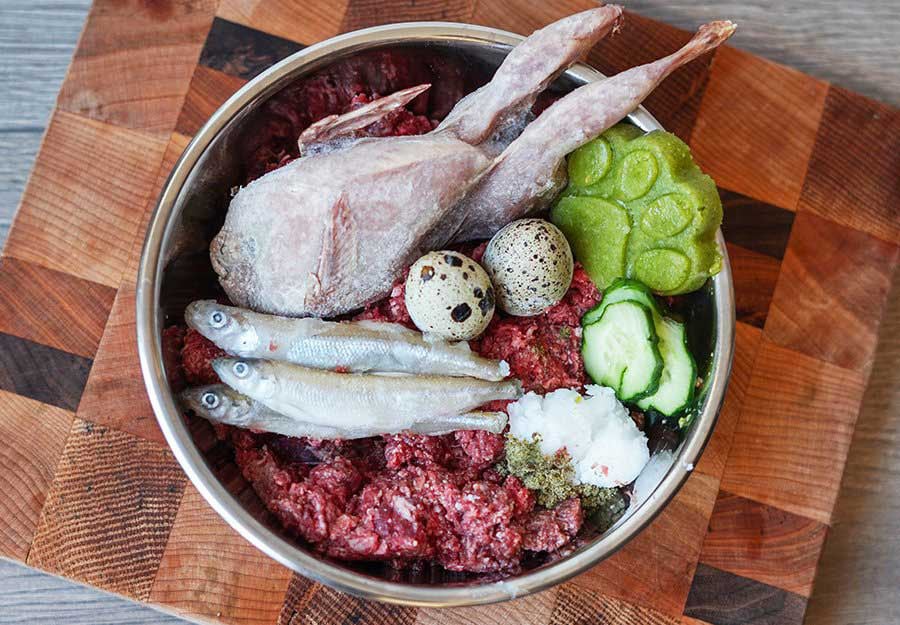
Customize Homemade Dog Food
Frequently Asked Questions About DIY Raw Dog Food Diet
What Are The Benefits Of A Raw Dog Food Diet?
A raw dog food diet can improve your pet's coat and skin health. It may enhance digestion and increase energy levels. Furthermore, many owners report better dental health and reduced allergies. This diet mimics what dogs would eat in the wild, offering a more natural nutrition source.
How To Prepare Raw Dog Food At Home?
To prepare raw dog food, choose high-quality meats, organs, and bones. Grind or chop the ingredients into small pieces. You can also add vegetables and supplements for balanced nutrition. Always ensure cleanliness during preparation to avoid contamination. Consult a vet for proper dietary ratios and recommendations.
Is A Raw Dog Food Diet Safe?
A raw dog food diet can be safe if prepared correctly. Use fresh, high-quality ingredients and follow hygiene practices. Always consult your veterinarian to ensure your dog’s nutritional needs are met. Monitor your dog for any adverse reactions or health issues during the transition.
What Ingredients Are Essential In Raw Dog Food?
Essential ingredients include high-quality meat, bones, and organs. You may also add vegetables like carrots or spinach for nutrients. Supplements like fish oil or probiotics can enhance health benefits. Always ensure a balanced ratio of protein, fat, and carbohydrates for optimal nutrition.
Customize Homemade Dog Food
Conclusion
Switching to a DIY raw dog food diet can be rewarding for you and your pet. It promotes better health and vitality. Always consult with a vet to ensure your dog's nutritional needs are met. With careful planning and preparation, you can create meals that keep your furry friend happy and healthy.


